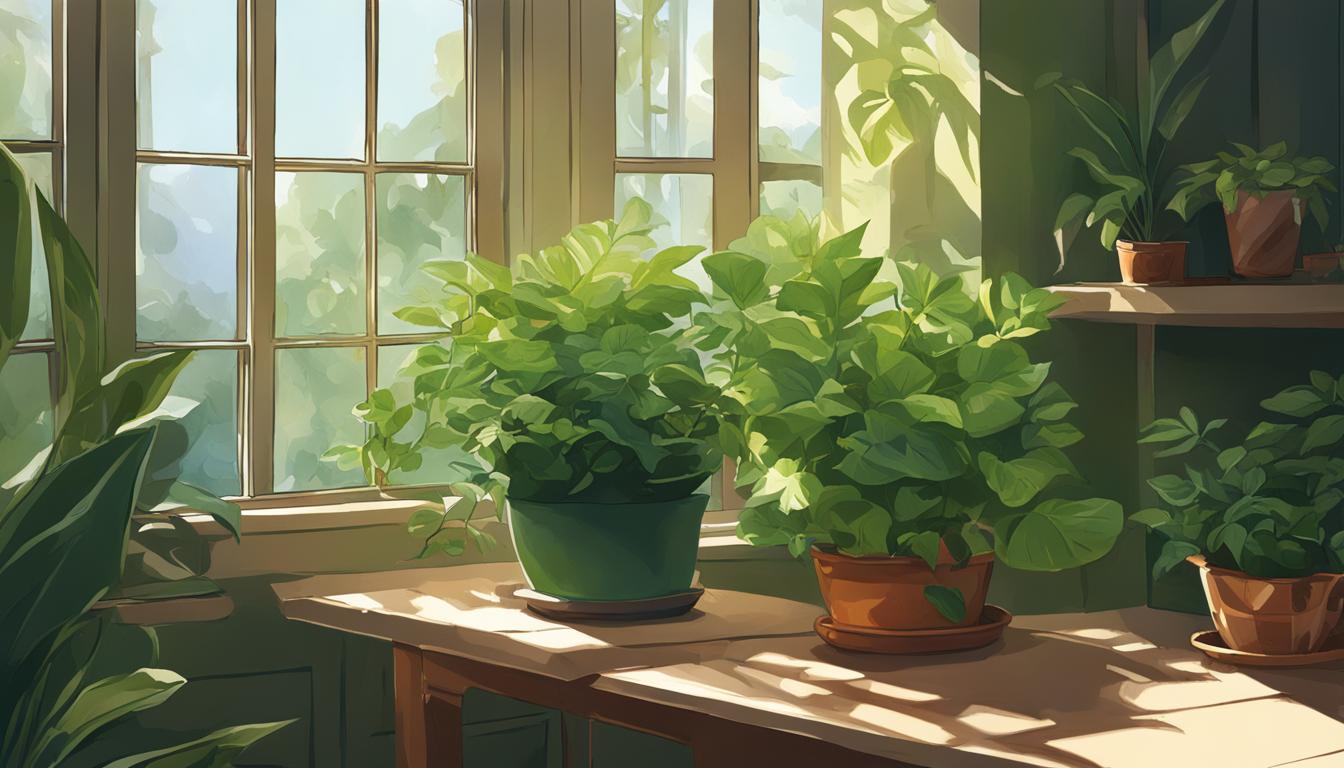
Indoor plants have the power to beautify our homes and improve the air quality. To promote healthy growth and vibrant foliage in houseplants, it is essential to understand the factors that influence their development. From light and temperature to humidity, water, nutrition, and soil, each element plays a crucial role in nurturing thriving indoor plants.
By following these houseplant care tips and providing the necessary conditions, you can ensure robust growth and enjoy the beauty of your indoor garden.
Key Takeaways:
- Proper lighting is essential for indoor plant growth. Choose plants that match the light conditions in each area of your home.
- Maintaining the right temperature range, between 58°F-86°F, ensures optimal growth for most houseplants.
- Water your plants thoroughly, allowing the soil to partially dry before watering again. Maintain humidity levels to prevent dry indoor environments.
- Select containers with drainage holes and use packaged potting soil formulated for indoor plants.
- Regular fertilization replenishes nutrients, while pest control measures protect houseplants from infestations.
Understanding the Importance of Light for Indoor Plants
Light is a crucial factor for the growth and development of indoor plants. It provides the energy needed for photosynthesis, which is essential for plant growth and food production.
To ensure the health and well-being of your houseplants, it is important to understand their light requirements and provide them with the appropriate lighting conditions.
Indoor plants have varying light preferences, ranging from low-light to high-light requirements. Low-light plants thrive in areas with 25-75 foot candles, while high-light plants require over 200 foot candles.
To determine the light levels in different spots of your home, you can use light meters or refer to plant labels for specific light requirements. Supplemental artificial lighting can also be used to provide adequate light for plants.
However, it is important to avoid overexposing plants to light, as it can cause damage. Some signs of overexposure include leaf scorching or yellowing. Finding the right balance of light for your indoor plants will help promote their healthy growth and overall vitality.
Light Requirements for Common Indoor Plants
| Plant | Light Requirements |
|---|---|
| Snake Plant | Low to moderate light (25-100 foot candles) |
| Pothos | Low to moderate light (25-100 foot candles) |
| Spider Plant | Low to moderate light (25-100 foot candles) |
| Peace Lily | Low to moderate light (25-100 foot candles) |
| Monstera | Moderate to high light (100-200 foot candles) |
| Fiddle-leaf Fig | High light (200+ foot candles) |
Table: Light Requirements for Common Indoor Plants
By understanding the importance of light for indoor plants and providing them with the appropriate lighting conditions, you can ensure their robust growth and vibrant foliage.
Maintaining the Right Temperature for Houseplant Growth
Temperature is a crucial factor in ensuring the robust growth of houseplants. To promote healthy development, it is important to understand the optimal temperature range for indoor plants and provide the right conditions.
Most indoor plants originate from tropical and subtropical regions, where temperatures range between 58°F-86°F. These plants are adapted to thrive in a warm and humid environment, and replicating these conditions in our homes is essential for their well-being.
It’s recommended to maintain a temperature range of 72°F-82°F for both the plants and humans, as this range offers a comfortable environment. Sudden temperature fluctuations should be avoided, as they can have detrimental effects on the growth and health of houseplants.
Temperature Recommendations for Common Houseplants
| Plant | Optimal Temperature Range (°F) |
|---|---|
| Spider Plant | 60-75 |
| Pothos | 65-85 |
| Rubber Plant | 60-75 |
| Peace Lily | 65-85 |
| Snake Plant | 70-90 |
Monitoring and adjusting the temperature conditions in your home can help ensure optimal growth for your houseplants. By providing the right temperature range, you are creating an environment in which they can thrive and flourish.
Remember that every plant has specific temperature preferences, so it’s important to research and understand the requirements of each individual plant. This will help you create an ideal environment and maximize the growth potential of your houseplants.
Watering and Humidity Tips for Healthy Houseplants
Proper watering is crucial for the health and growth of houseplants. They need frequent, thorough watering, ensuring that the entire root ball is wet and excess water drains out.
Allow the soil to partially dry before watering again to prevent overwatering. Checking the moisture levels by feeling the top 2 inches of soil can guide you in determining when to water.
In addition to watering, maintaining humidity is important, especially in dry indoor environments. Placing plants on trays with water-filled pebbles, setting them in naturally humid areas like kitchens or bathrooms, or using humidifiers can help increase humidity levels.
Misting the leaves is not as effective and can lead to foliage diseases. Proper watering and humidity control are essential for nurturing luscious and vibrant houseplants.
Watering Tips
- Thoroughly water the entire root ball until excess water drains out.
- Allow the soil to partially dry between waterings to prevent overwatering.
- Check moisture levels by feeling the top 2 inches of soil.
Humidity Control
- Use trays filled with water and pebbles to increase humidity around plants.
- Place plants in naturally humid areas like kitchens or bathrooms.
- Consider using humidifiers to maintain optimal humidity levels.
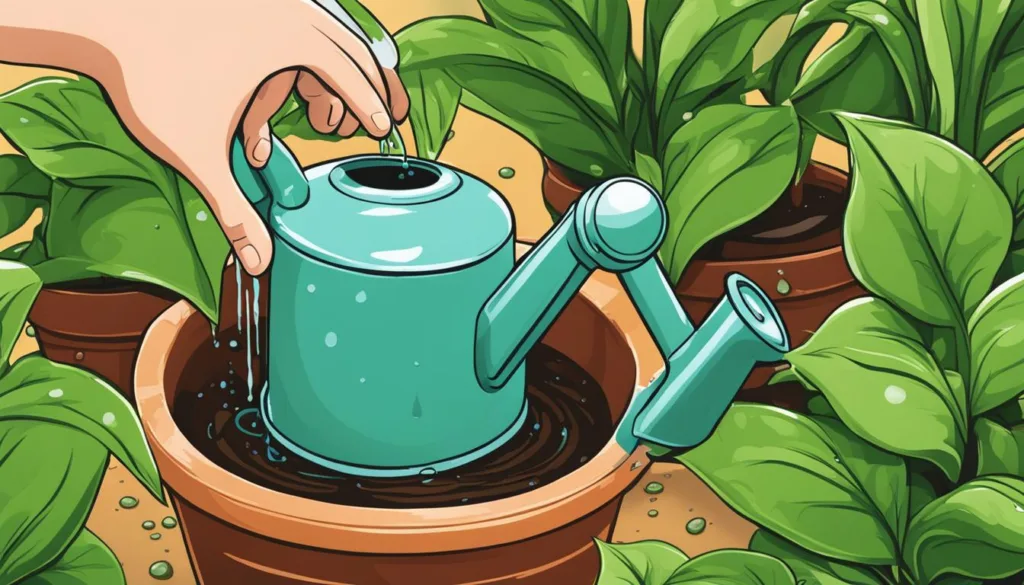
| Houseplant | Watering Frequency | Humidity Requirements |
|---|---|---|
| Spider Plant | Once a week | Medium |
| Pothos | Every 7-10 days | Low |
| Peace Lily | When top inch of soil is dry | High |
| Rubber Plant | Every 10-14 days | Medium |
Selecting the Right Containers and Potting Soil for Houseplants
Choosing the right containers and potting soil is essential for the growth and health of your houseplants. The right container provides enough space for the roots to grow and has drainage holes to prevent waterlogging. Additionally, the choice of container material and size can impact the aesthetic appeal and functionality of your indoor plants.
When selecting a container, consider the size of your plant and its root system. Choose a container that allows room for future growth, but avoid selecting one that is excessively large as it can lead to overwatering and root rot.
Container materials such as ceramic, terracotta, or plastic all have their advantages and disadvantages. Ceramic and terracotta containers are attractive and provide good drainage, but they can be heavy and breakable. Plastic containers are lightweight, affordable, and easy to clean, but they may not provide as much breathability for the roots.
Equally important is the choice of potting soil for your indoor plants. Regular garden soil should be avoided as it can hinder drainage and lead to root diseases. Instead, opt for packaged potting soils available at nurseries and garden centers.
These soils are specifically formulated to provide proper aeration, nutrition, and moisture retention for healthy root development. Look for potting soils that include ingredients like peat moss, perlite, vermiculite, and compost to ensure optimal plant growth.
Pros and Cons of Different Container Materials
| Container Material | Advantages | Disadvantages |
|---|---|---|
| Ceramic | Attractive, good drainage | Heavy, breakable |
| Terracotta | Good drainage, breathable | Heavy, may absorb water |
| Plastic | Lightweight, affordable, easy to clean | Poor breathability |
Common Ingredients in Packaged Potting Soils
| Ingredient | Function |
|---|---|
| Peat Moss | Retains moisture, improves drainage |
| Perlite | Aerates the soil, prevents compaction |
| Vermiculite | Retains moisture, provides insulation |
| Compost | Provides organic matter and nutrients |
Proper Plant Nutrition and Pest Control for Vibrant Houseplants
Proper plant nutrition and effective pest control are essential for maintaining vibrant and healthy houseplants. Providing the right nutrients and protecting plants from pests ensures their vitality and robust growth. Here are some tips to help you in these aspects of houseplant care.
Fertilization for Houseplants
Houseplants require regular fertilization to replenish essential nutrients that may be leached out from frequent watering. Quality potting soil can provide some nutrients, but it is important to supplement with regular fertilization. Choose an appropriate fertilizer based on the needs of your plants, such as a balanced formula or one specifically formulated for flowering or foliage plants.
Follow the recommended feeding instructions and adjust the frequency and strength of fertilization based on the plant’s growth and season. Be cautious not to over-fertilize, as it can lead to nutrient burn and damage the roots. A balanced approach to fertilization ensures that houseplants receive the necessary nutrients for optimal growth.
Pest Control for Houseplants
Insects and pests can pose a significant threat to the health of indoor plants. Regularly inspect your houseplants for signs of pests, such as aphids, scale, and whiteflies. Look for yellowing leaves, sticky residue, or visible pests on the foliage or soil surface.
If you detect an infestation, take immediate action to control it. Organic pest control methods, such as using neem oil or insecticidal soap, can be effective in treating most common houseplant pests. Follow the instructions on the product label and apply the treatment as directed.
For severe infestations, it may be necessary to seek professional assistance to ensure effective pest control without harming the plants. Regular monitoring and timely intervention play a crucial role in preventing pests and maintaining the health of your houseplants.

| Pest | Signs of Infestation | Treatment |
|---|---|---|
| Aphids | Visible small insects on the foliage, curled leaves. | Insecticidal soap or neem oil. |
| Scale Insects | Small bumps or shells on stems and leaves, sticky residue. | Isopropyl alcohol or neem oil. |
| Whiteflies | Tiny white insects flying around the plant. | Yellow sticky traps, insecticidal soap, or neem oil. |
By providing proper nutrition and protecting houseplants from pests, you can ensure their vitality and vibrant growth. Regular fertilization and timely pest control measures will contribute to the overall health and beauty of your indoor greenery.
Tips for Care and Maintenance of Challenging Houseplants
Growing challenging houseplants can be a rewarding experience, but it requires extra care and attention. To ensure the success of these finicky plants, here are some tips to keep in mind.
First, it’s crucial to understand the specific needs of each challenging houseplant. Research their ideal growing conditions, including light requirements, humidity levels, and watering preferences. By tailoring your care routine to meet these needs, you can provide the best environment for their growth.
Consistency is key when it comes to challenging houseplants. Establish a regular watering schedule and stick to it. Avoid overwatering or underwatering, as both can lead to stress and decline in the plant’s health. Similarly, maintain a consistent temperature and humidity level to ensure their well-being.
Lastly, observe and monitor your challenging houseplants closely. Pay attention to any signs of distress, such as yellowing leaves, wilting, or pests. Promptly address any issues by adjusting the care routine, repotting if necessary, or implementing pest control measures. Regularly inspecting and caring for your challenging houseplants will help them thrive.
FAQ
How much light do indoor plants need?
Indoor plants have different light requirements. Low-light areas generally have 25-75 foot candles, while high-light areas have over 200 foot candles. It’s important to choose plants that match the light conditions in each spot.
What is the optimal temperature range for indoor plants?
Most indoor plants thrive in a temperature range of 58°F-86°F. It’s important to maintain a comfortable temperature between 72°F-82°F for both the plants and humans.
How often should I water my houseplants?
Houseplants need frequent, thorough watering. Allow the soil to partially dry before watering again to prevent overwatering. Check the moisture levels by feeling the top 2 inches of soil.
How can I increase humidity for my indoor plants?
You can increase humidity by placing plants on trays with water-filled pebbles, setting them in naturally humid areas like kitchens or bathrooms, or using humidifiers. Misting the leaves is not as effective.
What type of containers and potting soil should I use for houseplants?
Select containers that provide enough space for root growth and have drainage holes. Avoid using regular garden soil and opt for packaged potting soils available at nurseries and garden centers.
How often should I fertilize my houseplants?
Houseplants require regular fertilization to replenish nutrients. Choose an appropriate fertilizer and follow the recommended feeding instructions. Quality potting soil can provide some nutrients but may still require supplemental fertilization.
How do I prevent pests in my indoor plants?
Regularly inspect your houseplants for signs of pests like aphids, scale, and whiteflies. Use organic pest control methods or seek professional assistance if the infestation is severe.
How can I care for challenging houseplants?
Challenging houseplants have specific needs. For example, moth orchids require patience between blooming cycles, crotons need consistent watering, and tradescantias benefit from bottom watering methods. Understanding the unique needs of these plants is crucial for their care.

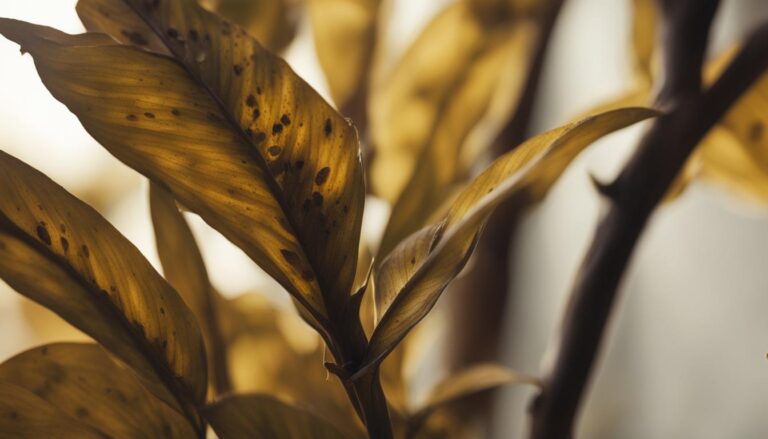

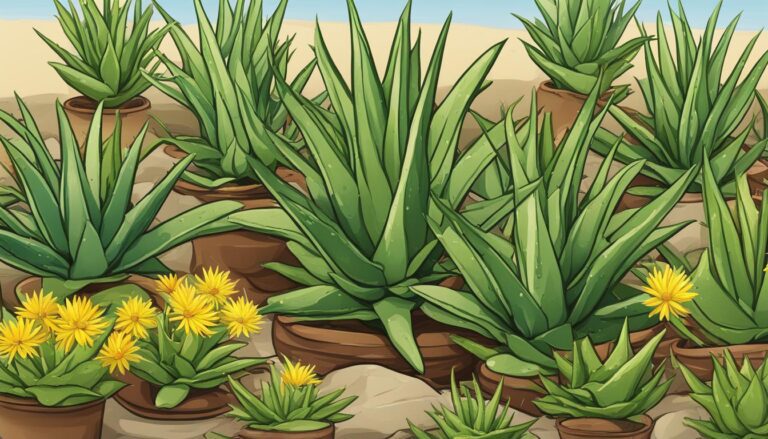


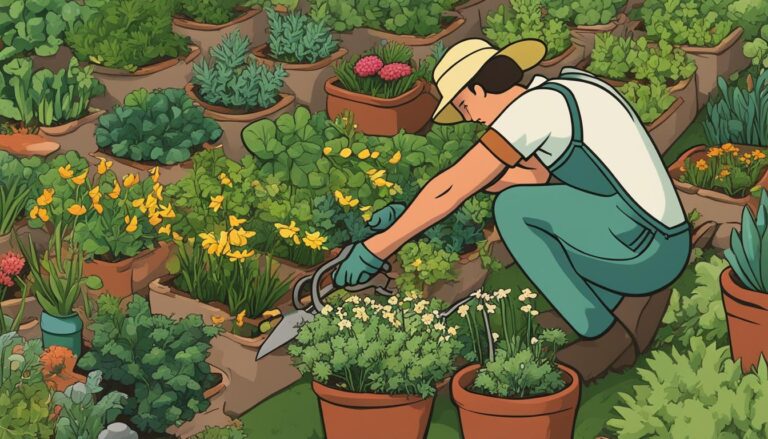
One Comment
Comments are closed.